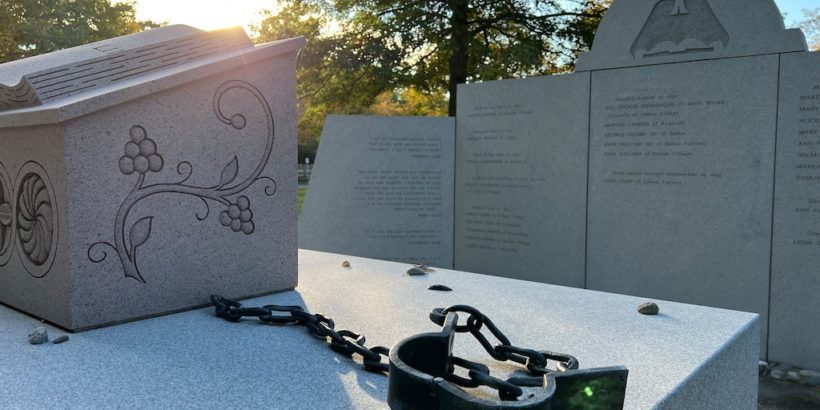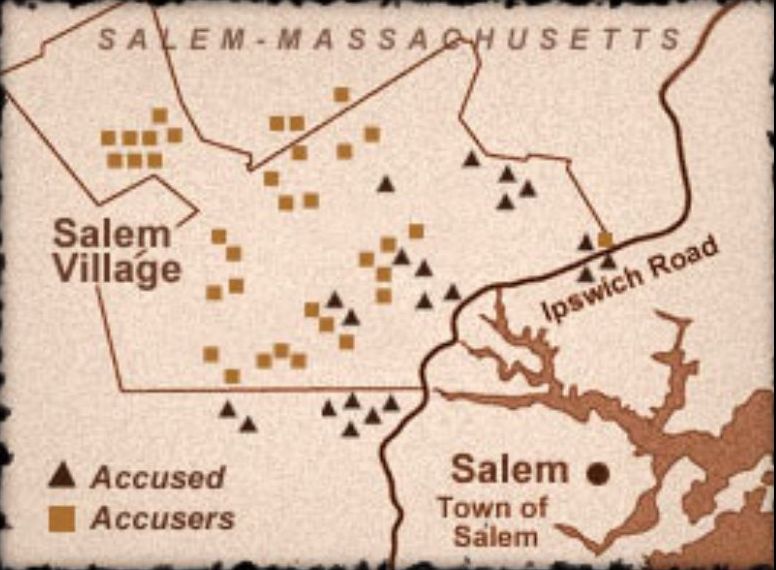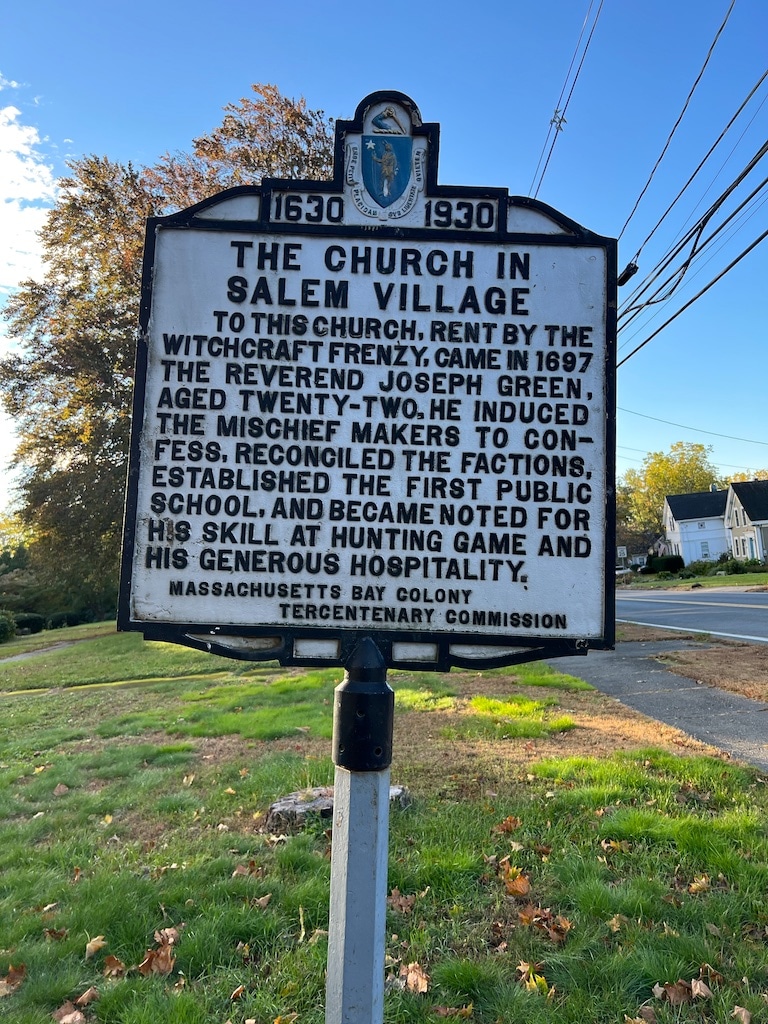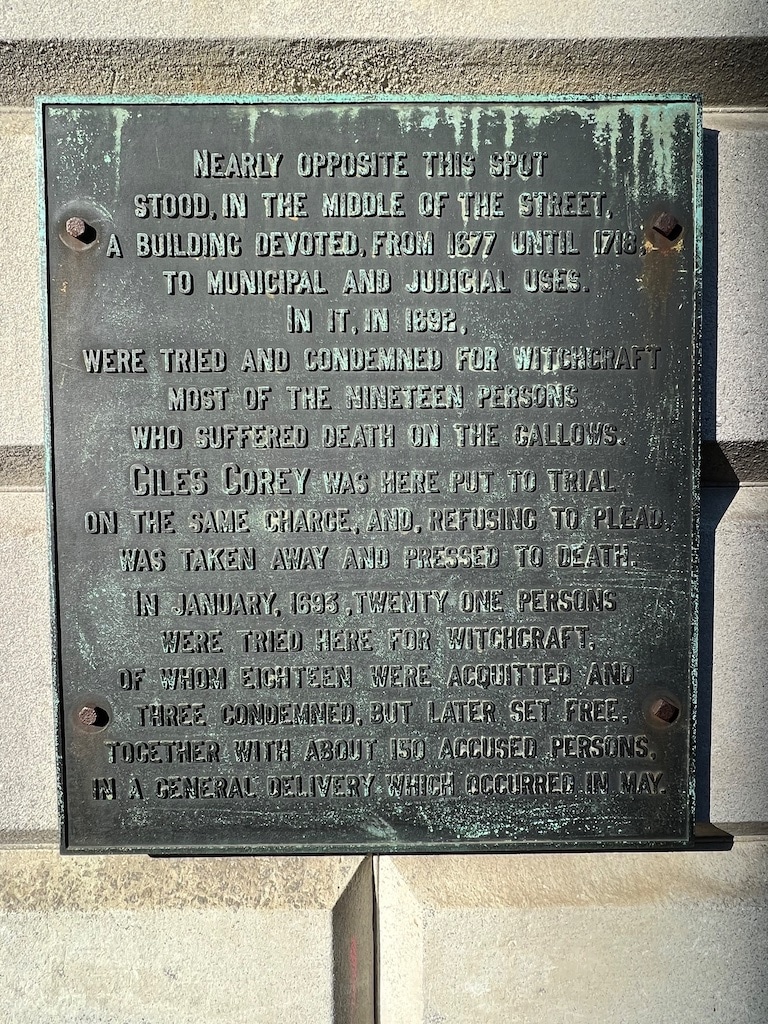Salem, Massachusetts is a unique destination to say the least. It’s a charming New England town with a modern reputation as a bewitched city where Halloween lovers seem to flock. It has its fair share of cheesy tourist attractions but it also has a treasure trove of historical sites, some of which have a very sinister side.
In this article, I will show you all of the important historic sites of the Salem Witch Trials that you can explore in Salem. These are places where real events took place like the hangings of the accused witches and the first outbreaks of the “afflicted” girls.
I’ll give you a pre-made itinerary so that you can logically follow the events of the witch trials in a type of chronological order that makes sense from a historical perspective.
In addition, I’ll give you all the details you need to know like addresses, historical insight, and some practical tips on visiting.
Table of Contents
Planning your visit
I’ve divided these sites into two separate groups (I explain why below) but you can easily view both of these groups in one day.
It will help tremendously if you have a vehicle to take you over to Danvers but you could also Uber back-and-forth if needed or just go for a very long walk (not recommended).
I would try to carve out time to visit the sites in this article that is separate from time used to check out light-hearted destinations like Hocus Pocus filming sites or other more “entertaining” sites in Salem.
It’s just my personal preference but I really like to consolidate all “memorial-type” sites into one continuous outing. That way you’re not going back-and-forth between fun sites and sites that deserve a little bit more reverence.
So with that out-of-the-way let’s get into how to check out the Salem Witch Trial sites!
My pick for a hotel in Salem: Hampton Inn Salem
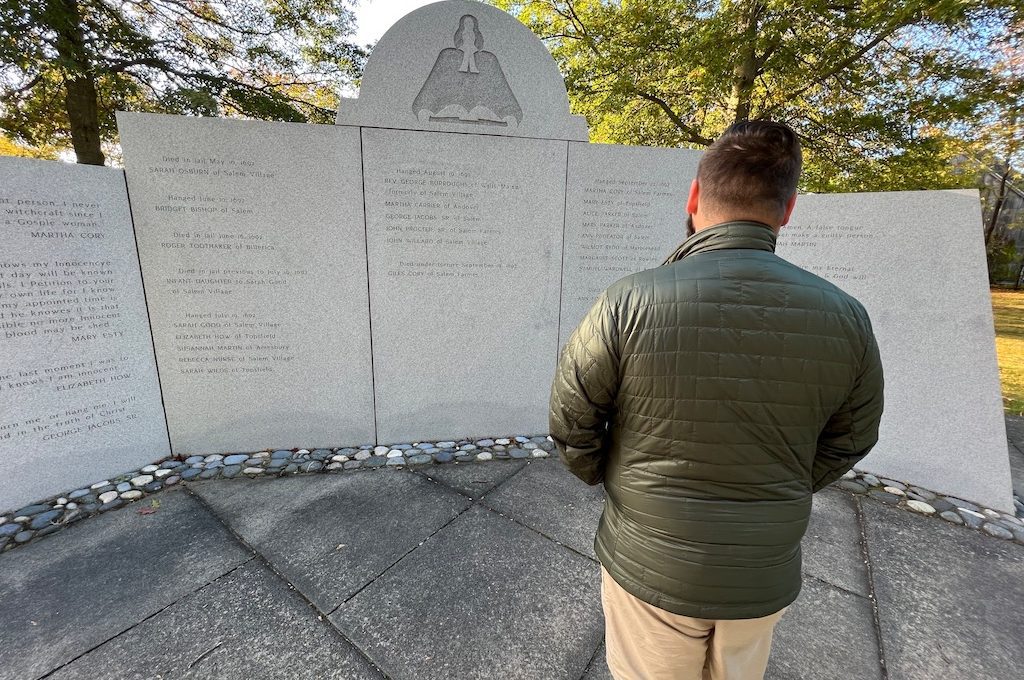
A quick word on the sites
The sites in Danvers and Salem are mostly memorials and site markers meaning that you don’t see the actual structures that existed during the witch trials (although some buildings are thankfully still standing).
For me, it was still worth it to stop by the historical markers just to imagine the happenings that went on over 300 years ago and “feel” the history.
But because you will be dealing with historical markers, it will really help if you get versed in the history surrounding the witch trials before you visit. I would recommend watching a documentary like the Witches of Salem.
These sites below are 10 of what I believe are the most relevant and interesting Salem Witch Trial sites but if you would like, you can go down the rabbit trail and find a lot more sites in the nearby areas to explore.
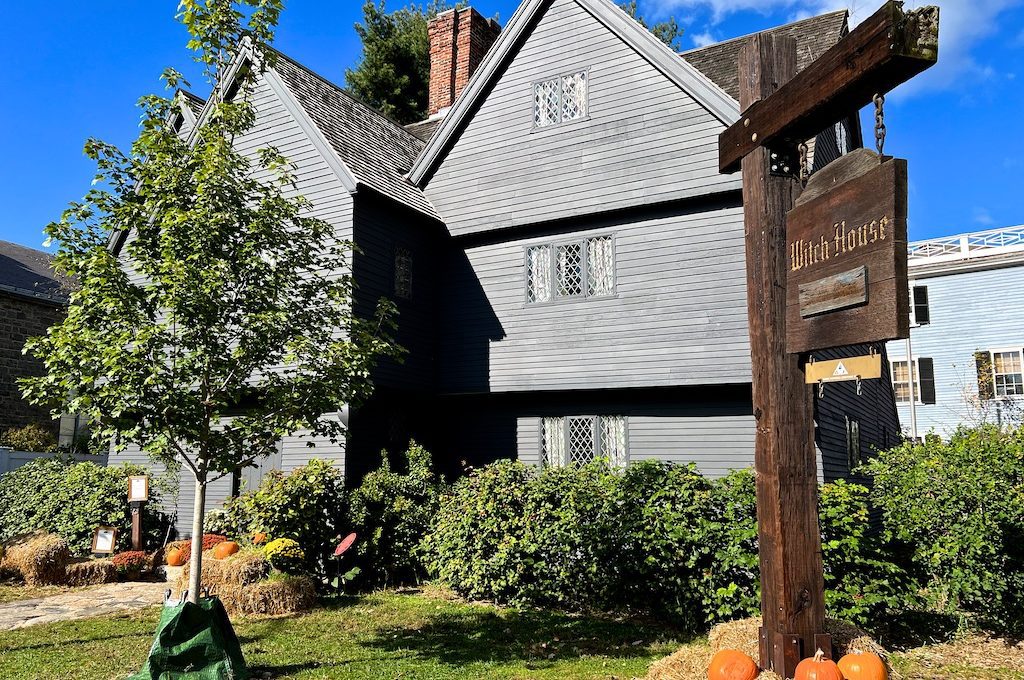
Salem Village and Salem Town
When the Salem Witch Trials were taking place in the 1600s, Salem consisted of two separate areas: Salem Village and Salem Town.
Salem Village is modern day Danvers (population: 27,400) and Salem Town is modern day Salem (population: 43,252). The two cities are located about 5 miles away from each other.
Both locations have key sites from the witch trials, and in my opinion if you want a complete visit of Salem Witch Trial historical sites, you HAVE to visit both.
Danvers is less urban and more of a residential area, so you probably won’t encounter a lot of tourist crowds since those tend to stay in Salem.
This affords you a more intimate experience with the historical sites allowing you to properly reflect and contemplate the craziness that ensued.
Note: Some of the Danvers sites are located by the Highlands School so if you visit in the morning, the area can be quite congested. My suggestion would try to be to avoid the morning rush hours when visiting during the week.
Tip: Use the free app WalletFlo to help you travel the world for free by finding the best travel credit cards and promotions!
Salem Witch Trials sites in Danvers
The great thing about Danvers is that most of the spots are clustered together so you can just walk around the block and see a handful of them. It only took us about 30 to 40 minutes total to see all of the main spots in Danvers.
The drawback is that Danvers is a little far from Salem (15 minute drive) and will likely require you to drive or take an Uber to get there. If you drive you should be able to find street parking nearby these locations.
Salem Village Parsonage
- Address: 67A Centre St, Danvers, MA 01923
- Website
This is the spot were the Salem witch trials began, so it makes sense to kick off your visit of the historical sites with this location.
Samuel Parris and his wife Elizabeth lived here along with their 9 year-old daughter Elizabeth (aka Betty), and 11 year-old orphaned niece Abigail Williams among other family members. Also living in this house was their slave, Tituba.
In the middle of January 1962, Betty began having her fits along with Abigail Williams. A month later, their condition worsened and soon a local physician came by and declared them “under an Evil Hand.” It was the very beginning of what would become a very dark chapter for Salem.
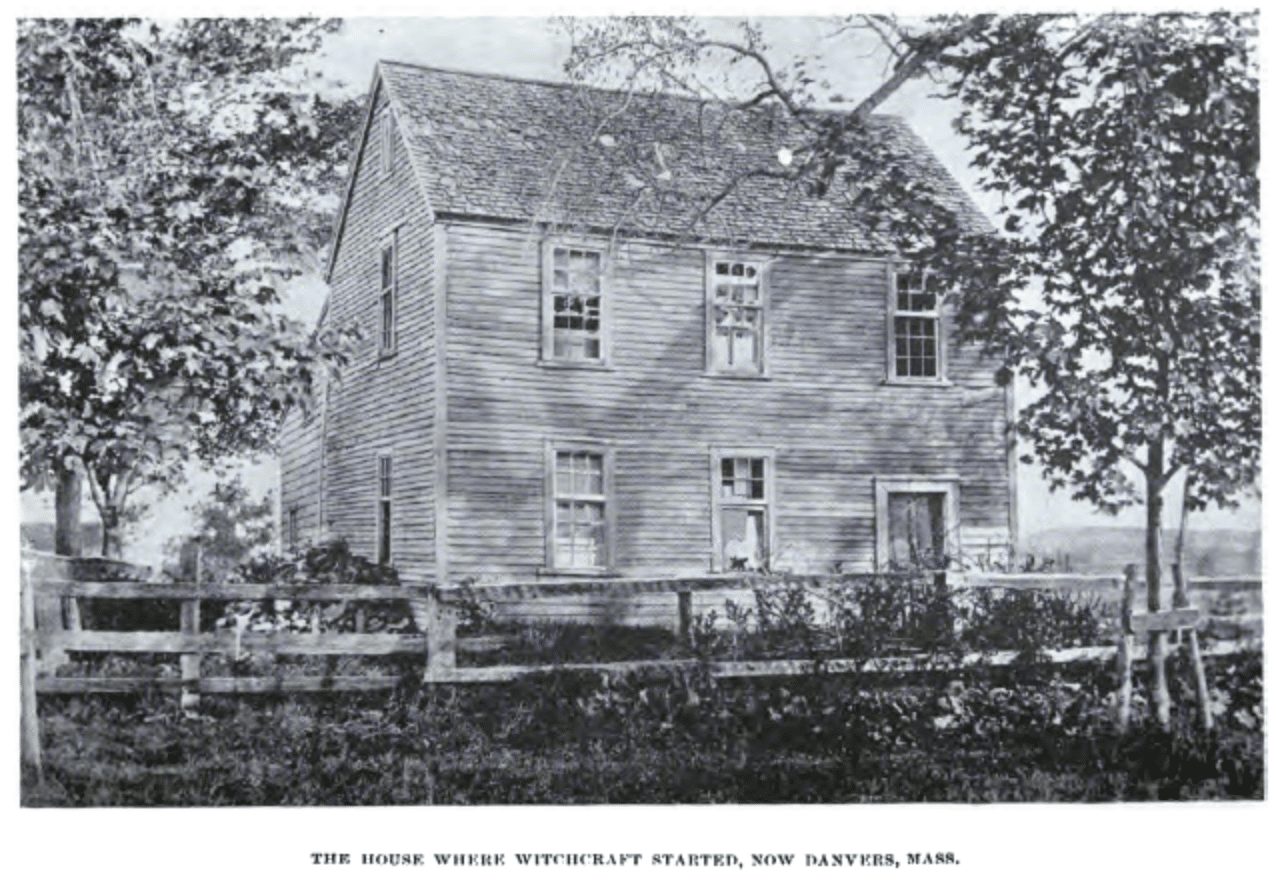
While looking over this rocky foundation, you can imagine the frenzy that played out in his house. Puzzled doctors and ministers going in and out, prayers of desperation — this house had mad drama.
Note: The actual location of the foundations are a bit tucked away from the main street. When you arrive at the address, you’ll need to walk down the pathway pictured below and you’ll eventually come across an open lot where you will see a blue sign post for the site. You really can’t miss it.
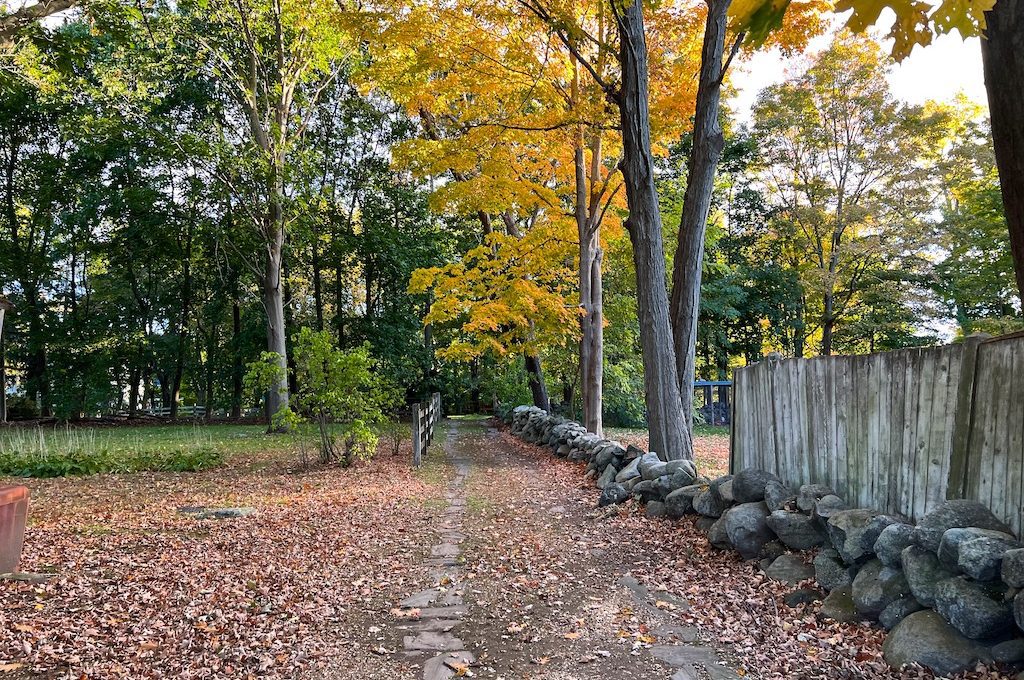
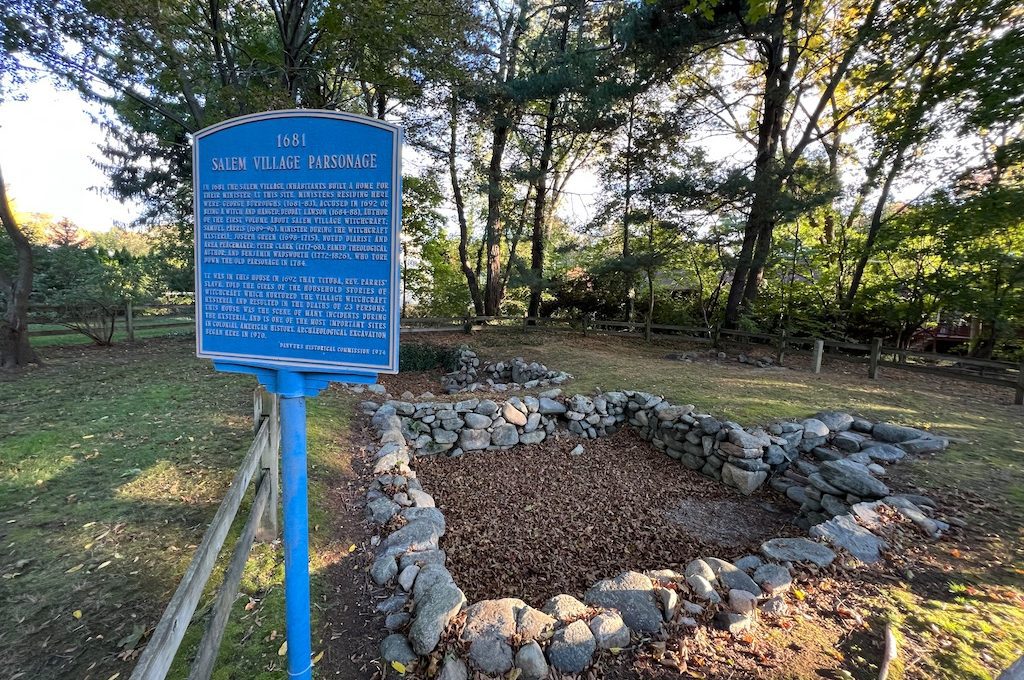
Church in Salem Village
- Address: Corner of Hobart Street and Centre Street, Danvers, Mass
Just a short walk from the Salem Village Parsonage is the site of the Salem Village Church. This is where some of the accused and their accusers attended church during the Salem Witch Trials.
In fact, some of the afflicted girls even exhibited symptoms of their afflictions here in the spring of 1692 and some of the accused were excommunicated.
You’ll find a historical marker where this church was located and there is also a church that currently sits on that site: The First Church of Danvers Congregational.
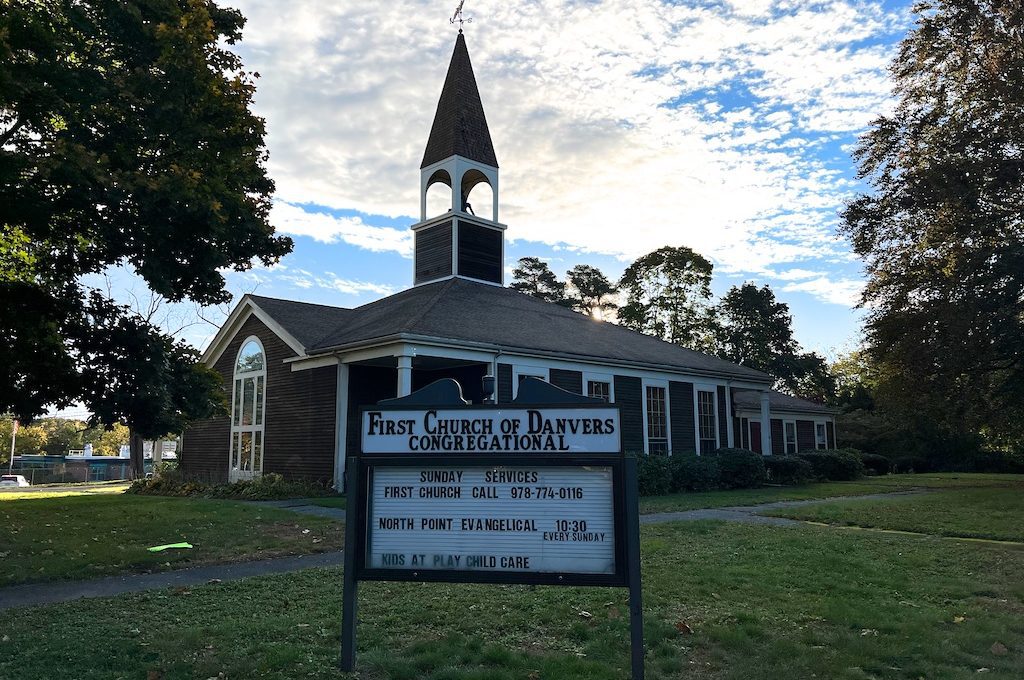
First Meetinghouse of Salem Village
- Address: 175 Hobart Street, Danvers, MA, USA
- Website
This meeting house was where a lot of the accused witches were examined including Tituba, Sarah Osborne, and Sarah Good. Others who were examined here include: Rebecca Nurse, Dorothy Good, Martha and Giles Corey, Bridget Bishop, and Mary Easty.
These examinations were initially set to take place in a smaller building but because so many spectators turned out they had to use the larger meeting house. With so many stunned locals onlooking, you could only imagine the pandemonium that swept through everyone as the first accused witches were brought in for questioning.
Note: There is currently a replica of the First Meetinghouse of Salem Village at the Rebecca Nurse Homestead.
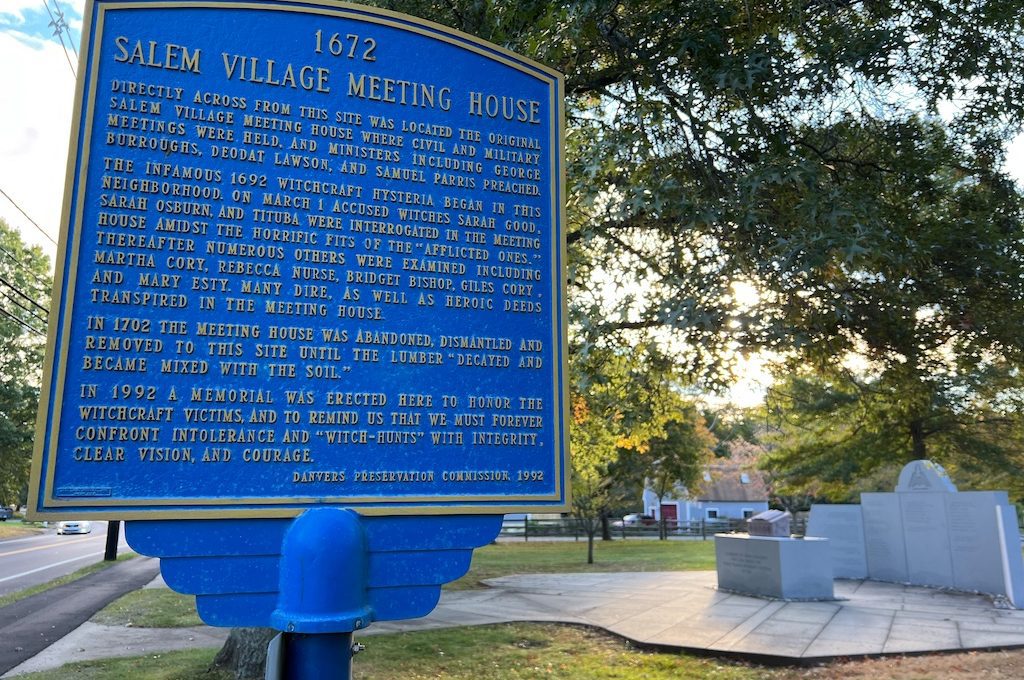
Witchcraft Victim’s Memorial
- Address: 172 Hobart St, Danvers, MA 01923
Visiting the Witchcraft Victim’s Memorial is when the magnitude of the trials really started to hit me. It’s actually a beautiful and well done memorial located right at the edge of a park directly across from First Meetinghouse of Salem Village.
Seeing the quotes engraved in the memorial really drives home the innocence of the accused and how terrible it was that they had to endure false accusations and unjustified executions.
When reading the quotes I honestly found myself getting a little angry at all of the accusers and struggling to accept how some humans could be so irrational and heartless.
But I think the witch trials are not just about teaching us the dangers of fear and scapegoating — there’s also a related lesson about the need for empathy even for the accusers.
It’s very easy to judge people from a different time without thinking about how we ourselves could’ve been swept up in such a craze if we were born into those settings.
If we can imagine us having our own irrational blindspots then, we can imagine us falling victim to fear now and hopefully strive to do better.
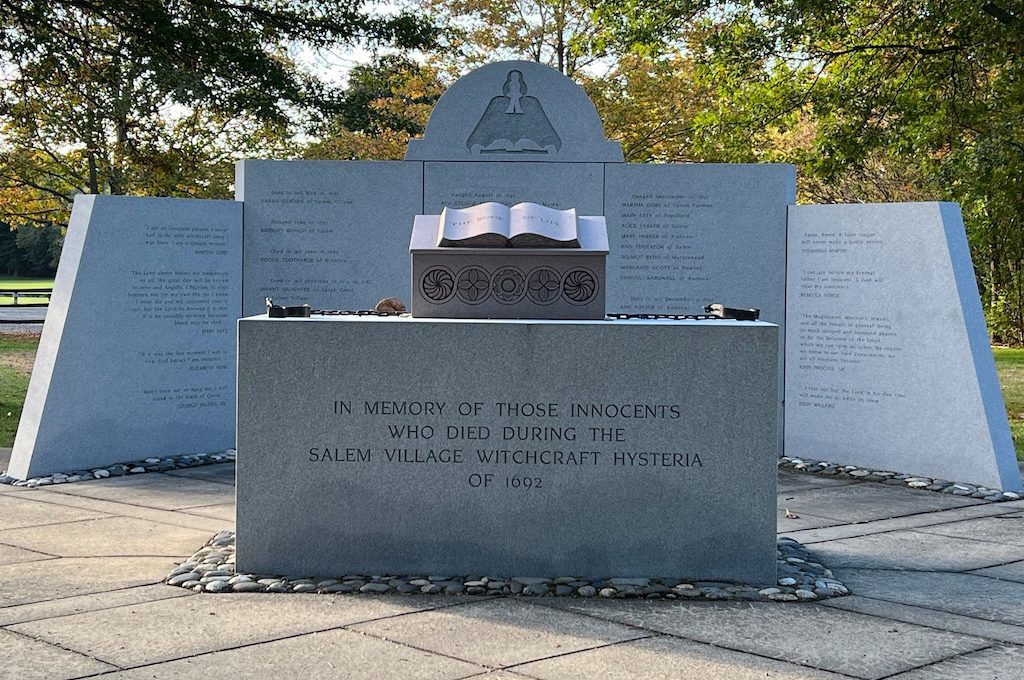
The Rebecca Nurse Homestead
- Adddress: 149 Pine St, Danvers, MA 01923
- Website
Unfortunately, during our visit the Rebecca Nurse Homestead was closed so we did not get to experience it but I think this is definitely one of the must-visits in Danvers. It’s known for being the only home of a person executed during the trials open to the public.
Rebecca Nurse is one of the sadder stories as she was an innocent elderly grandmother accused of witchcraft in March of 1692. She was arrested on March 23 and after that was never returned to her house. She would be hanged on July 19, 1692 at Proctor’s Ledge in Salem Town.
Her family secretly retrieved her body after the execution and buried her in the family cemetery near the property. Today, you can book tours of the property but just be sure to plan ahead.
Salem Witch Trials sites in Salem
Danvers has a lot of the sites related to the beginning of the Salem Witch Trials which is why I recommend heading there first. After you check out those sites, you can head to Salem where you will find sites that played an important role in the later stages.
You can easily view all of the Salem sites on foot since most of them are pretty close together with the exception of Proctor’s Ledge which is still only about 1 mile outside of the center of downtown.
Note: Some of the plaques on the walls of buildings are small and easy to miss so be sure to give them a close eye when you come up on the address.
Witch House
- Address: 310 Essex St, Salem, Mass
- Website
The Witch House is known for being the only building you can visit in Salem still intact that played a role in the Salem Witch Trials. It was the home of Jonathan Corwin who was a judge in the Salem Witch Trials and lived there for 40 years until his death in 1718.
Corwin, along with fellow judge John Hathorne, played an early role in interviewing the accused witches in places like the Salem Village Meetinghouse. According to some sources it’s not exactly clear what his overall role was and where he stood on things like spectral evidence.
If you plan ahead of time and get tickets, you can actually go inside and tour the interior.
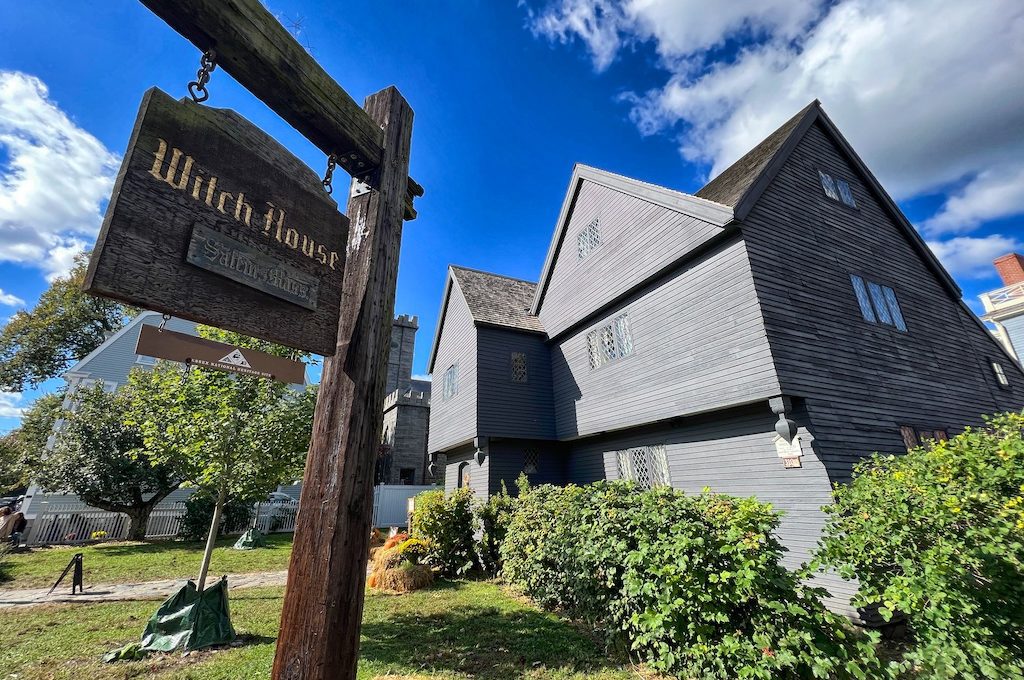
Courthouse
- Address: 70 Washington St, Salem, MA 01970 (about 100 feet south of Lynde Street)
- Website
About a four minute walk from the Witch House you come across the site of the original courthouse that housed the trials of the accused.
Governor William Phips in May of 1692 created the “Court of Oyer and Terminer” with Lieutenant Governor William Stoughton as its chief magistrate specifically to hear the witch trial cases that were quickly accumulating.
Other members of the court were merchants, landowners, and politicians, including Jonathan Corwin — the owner of the house you just visited.
You can imagine the intense cross examinations that took place on these grounds, the elaborate testimonies of “spectral evidence,” the stunned (and probably terrified) jury members, and pleas for innocence that were unheard.
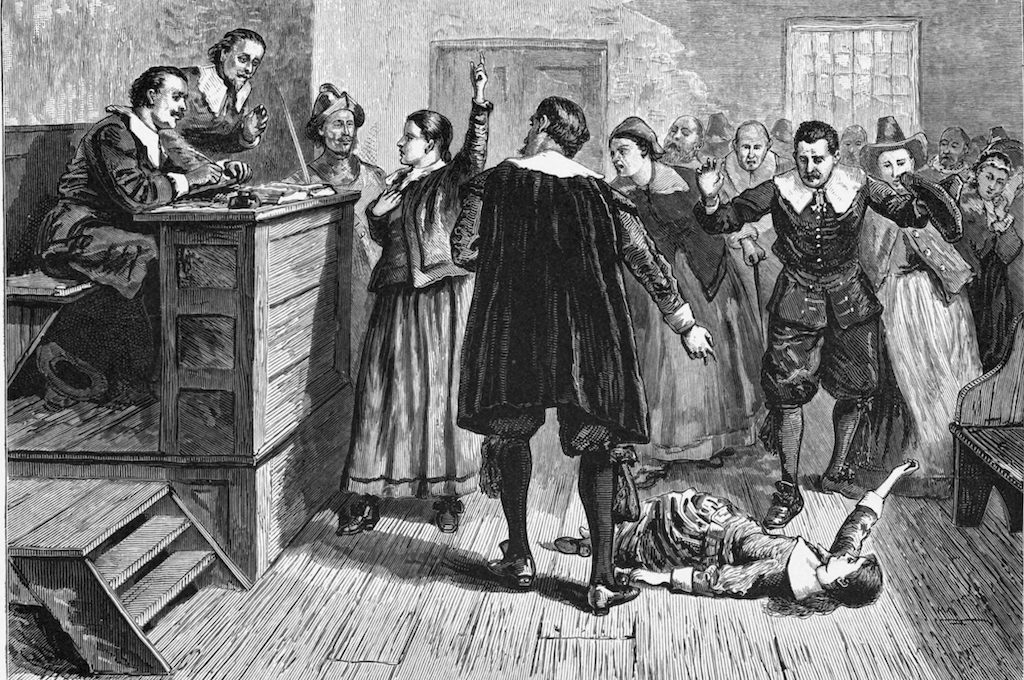
Court proceedings that took place here include the trials of:
- Bridget Bishop (June 2);
- Sarah Good, Susannah Martin, Rebecca Nurse, Elizabeth How, and Sarah Wildes (around June 28);
- Martha Carrier, John and Elizabeth Proctor, John Willard, George Jacobs, and George Burroughs (August 2-5);
- Martha Corey, Mary Easty, Ann Parker, Mary Parker, Ann Pudeator, Dorcas Hoar, and Mary Bradbury (week of September 2);
- and Wilmott Redd, Samuel Wardwell, and Margaret Scott (September 13)
Old Witch Gaol
- Address: 10 Federal St, Salem, MA 01970
About four minutes away from the old courthouse is the Old Witch Gaol.
This is the location where many of the accused witches were imprisoned while they awaited trial or execution. You could imagine the state of disarray the accused must’ve been in as they were transported from the courthouse over to these dark dungeons with onlookers probably cheering in the streets in a frenzy.
The conditions were known to be brutal. Freezing during the winter and sweltering hot during summer. Some of the accused were apparently chained down to prevent their spirits from escaping (I think they believed the iron helped?).
The fact that disturbs me the most was that the accused would be forced to pay for their room and board and even for the chains used on them. Of those who were released, many still struggled financially to overcome their cost of imprisonment.
It’s also worth remembering that some of the accused did not survive imprisonment — probably due to the overwhelming stress and terrible living conditions.
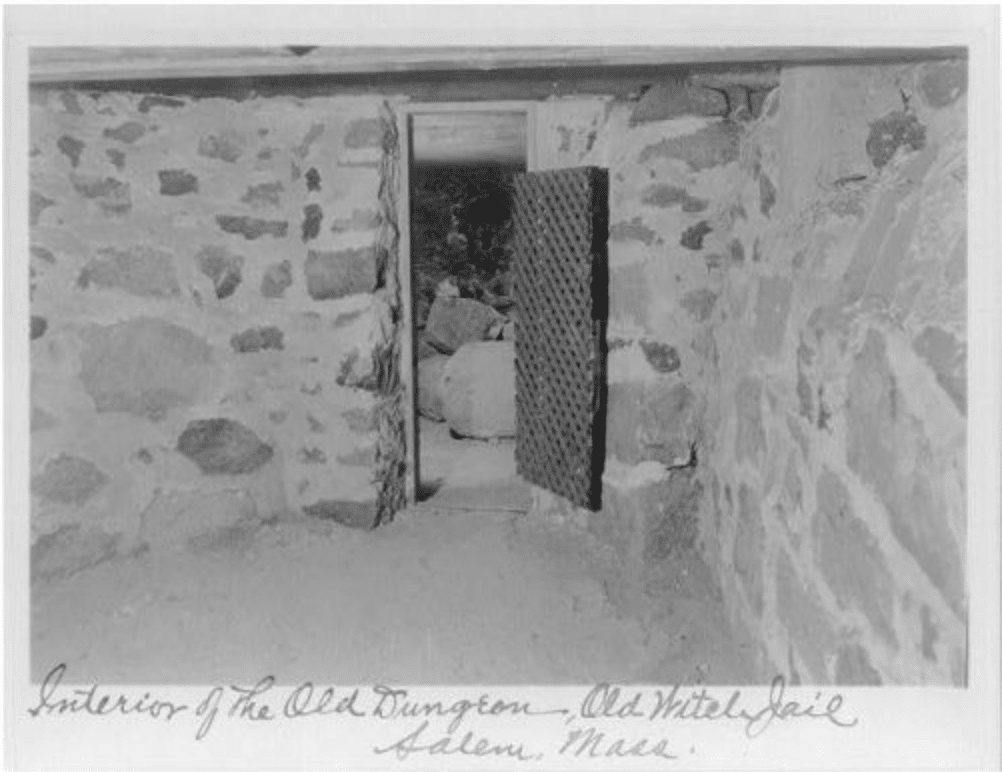
In 1956, the New England Telephone Company constructed their new headquarters over the site of the old jail and that is where you can find the plaque below.
Some wooden beams from the dungeon were donated to museums and you might be able to find them at the Salem Witch Museum and the Witch Dungeon Museum.
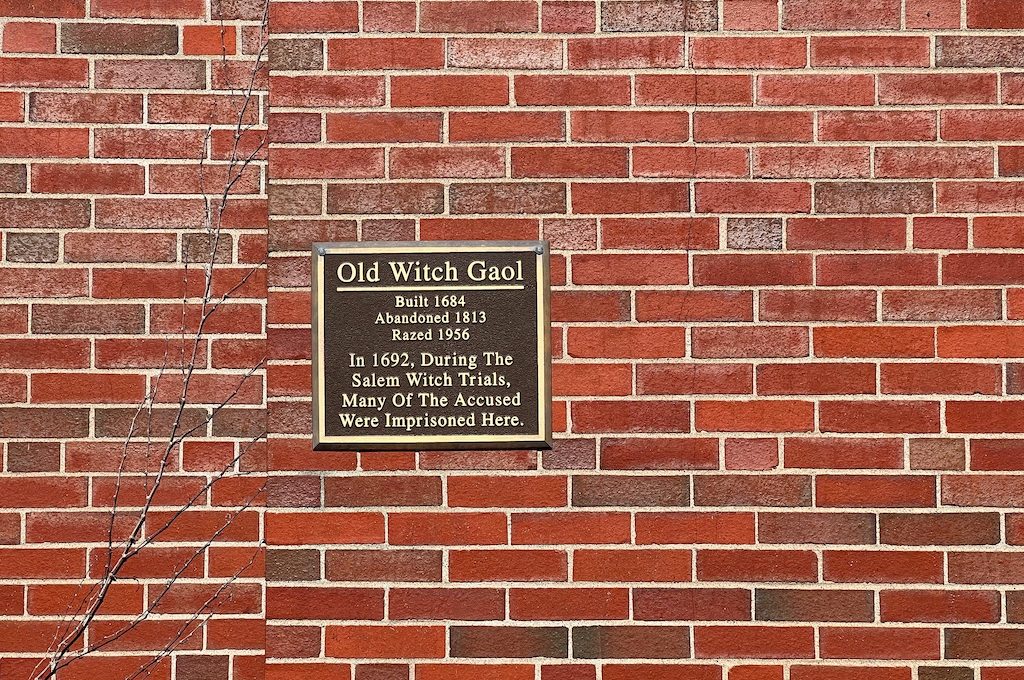
Proctor’s Ledge
- Address: 7 Pope St, Salem, MA 01970
- Website
From the Old Witch Gaol, it’s about a 20 minute walk to your next destination: Proctor’s Ledge.
This is where the gallows were located and the falsely accused were hanged. It was no doubt a spectacle as the accused witches were paraded through town to the gallows.
A lot of research went into finding this exact location and while the memorial is small, it’s a pretty monumental spot as it is the spot where these victims took their last breathe.
Initially, people suspected that the hangings took place at the summit of Gallows Hill. But in 1921, local historian Sidney Perley pinned the spot of the executions closer to the base of the hill on Proctor’s Ledge. (Eyewitness accounts of residents who had witnessed the hangings from their homes placed the gallows at the lower elevation.)
The current memorial is a recent one built in 2016 and dedicated on July 19, 2017, the 325th anniversary of the hangings of Sarah Good, Elizabeth Howe, Susannah Martin, Rebecca Nurse, and Sarah Wildes.
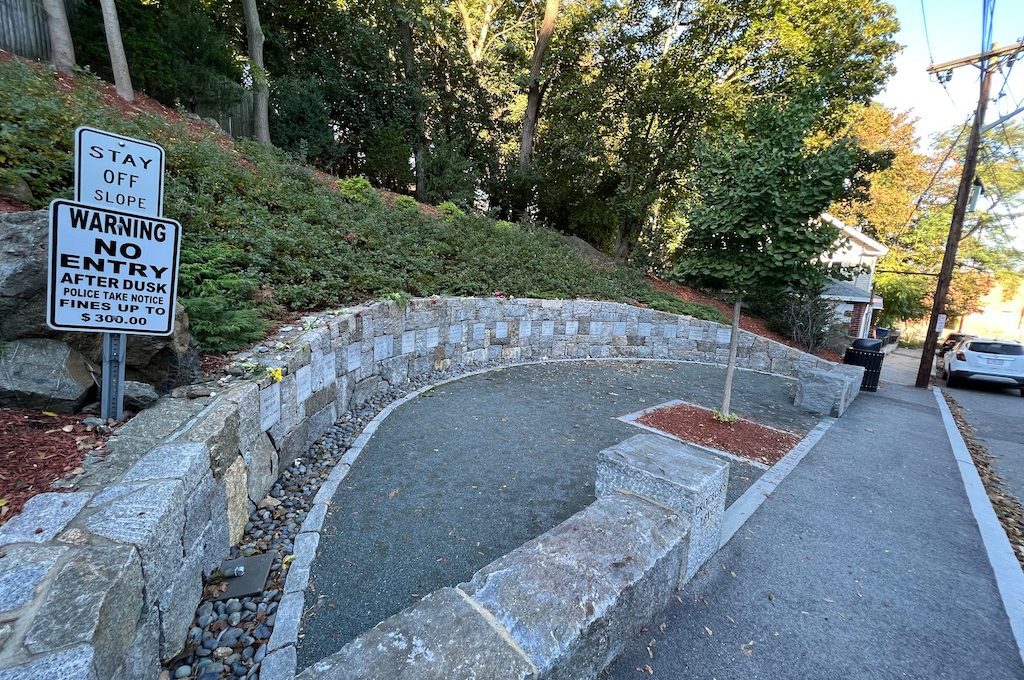
Salem Witch Memorial
- Address: 24 Liberty St, Salem, MA 01970
- Website
After you’ve gone through the journey of discovering where all of the madness began, where the examinations and trials took place, and where the accused were imprisoned and executed, you can head back to the center of town to reflect on the last site: the Salem Witch Memorial.
The Memorial — built in 1992 for the 300th anniversary of the Salem Witch Trials — houses 20 granite benches with the victims’ names engraved along with the date (and type) of execution.
It sits next to the Old Burying Point cemetery which is where Salem Witch Judge John Hathorne is buried.
There are some quotes in the stone slabs at the entryway of the memorial which echo some of the quotes you may have seen at the memorial in Danvers.
“For my life now lies in your hands”
“On my dying day, I am no witch”
“God knows I am innocent”
“Oh Lord help me”
“I am wholly innocent of such wickedness”
“If I would confess i should save my life”
“I do plead not guilty”
Black locust trees stand in the middle which I believe were the type that were used at the gallows.
The design of the memorial came from a competition that received over 240 entries. The winners were reportedly inspired by the Vietnam Memorial wall in Washington DC.
This is where I imagine a lot of people first hear about the death by pressing that occurred with Giles Cory. He was essentially tortured over the span of several days and suffocated while admirably refusing to plead guilty for something that he did not do.
This is a fitting spot to end your tour of historical Salem Witch Trial sites.
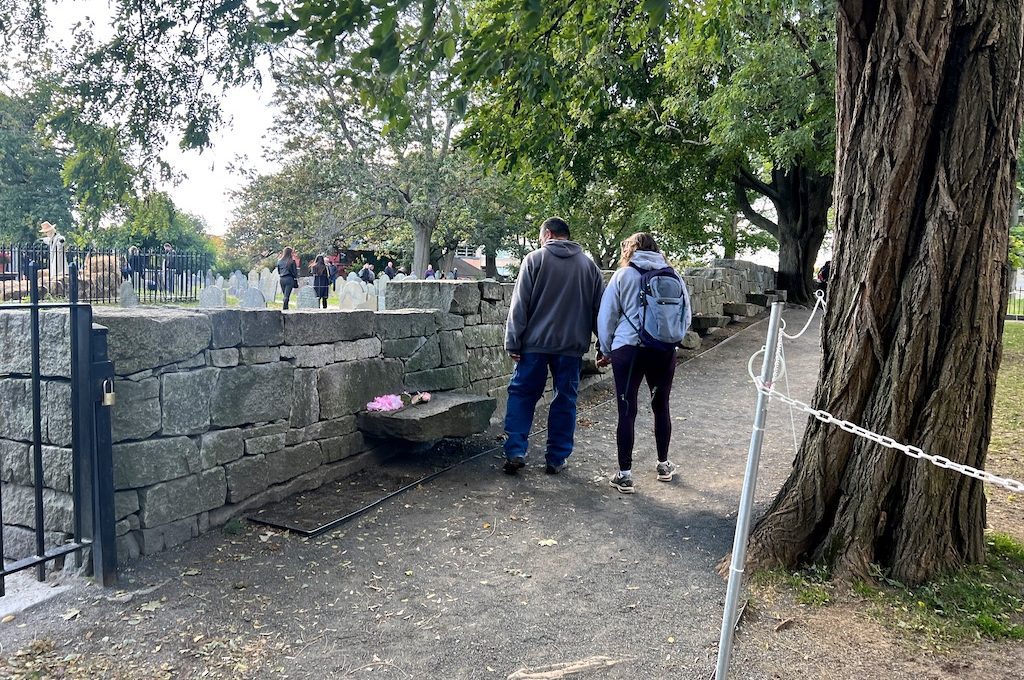
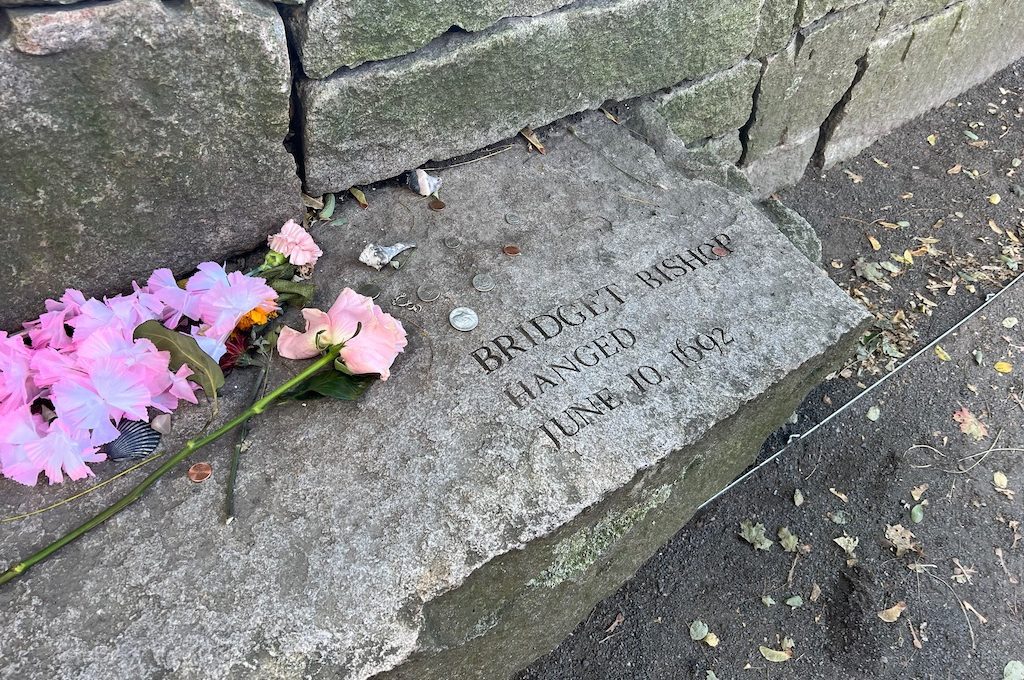
Final word
As mentioned above, there are dozens and dozens of sites connected to the Salem Witch Trials that you can still check out today. But the 10 sites above are what I believe to be some of the most relevant sites to retracing the history of the Salem Witch trials from beginning to end.
Daniel Gillaspia is the Founder of UponArriving.com and the credit card app, WalletFlo. He is a former attorney turned travel expert covering destinations along with TSA, airline, and hotel policies. Since 2014, his content has been featured in publications such as National Geographic, Smithsonian Magazine, and CNBC. Read my bio.

